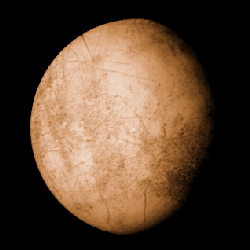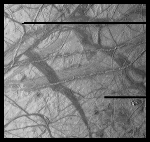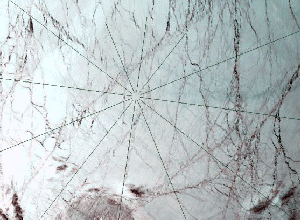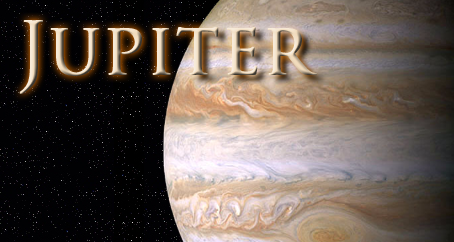Europa, a moon of Jupiter

Jupiter's sixth moon, the second of the large Galilean Satellites (four moons discovered by Galileo in 1610) is Europa. Europa is slightly smaller than Earth's moon at 3,066 kilometres wide, but is bigger than Pluto which is only 2,280 kilometres wide so it could be a planet if it was orbiting the Sun and not Jupiter.
Europa's surface is extremely smooth with hardly any craters. This is because it is believed that Europa is another living moon, like the volcanic Io. Europa has an icy surface, about 5 kilometres thick and under that, it is believed that there are oceans about 50 kilometres deep. Its neighbour Io is heated inside by the friction caused by the gravitational pull of Jupiter on one side and Europa and Ganymede on the other. This is what causes its frequent volcanic eruptions. A similar process takes place on Europa with Jupiter and Io's gravities pulling the planet on one side and Ganymede and Callisto on the other. This heats the planet internally and results in warm water reaching the surface and freezing. So, any impact craters from meteors and asteroids can be covered up by water filling them and freezing to form a solid surface. In a similar way, the cracks on Europa's surface may be where the surface has fractured but filled up with water which has frozen again. Below you can see ridges on Europa's surface, which show that the surface is often disrupted by what goes on under the surface. It is rare for a moon to be affected by underground activity. Surface appearances are usually only affected by impacts of meteors and asteroids. It is also possible that the ridges open up in parts to let out gases, similar in a way to how volcanoes work, only with water instead of hot lava. These releases of gas from water, similar to steam from a boiling kettle, release oxygen into Europa's very thin ozone.

The presence of frozen and liquid water on Europa has led people to ask whether life is actually possible there. Of course, it will not be life like the life experienced on Earth. Jupiter is too radioactive, pumping out 500 times more radiation than people can survive in. This is at Jupiter's surface, but Europa is still close enough to receive high amounts of radiation from the planet. Temperatures on Europa's surface are much too cold for living organisms (people, animals, plants) to survive in. However, life has been discovered in some of the most extreme places on Earth - places which cannot possibly receive light or heat from the Sun. These conditions may also be similar to the conditions on Europa, under its icy surface, in its oceans of water. In fact, a satellite picture of Earth's North Pole shows a surface similar to Europa's with ridges frozen under its surface. Compare the picture above of Europa's surface with the picture below of the surface at Earth's North Pole.

It is also known that Europa has an ozone (Earth also has a protective ozone) and a thin layer of oxygen atmosphere. There is a possibility that primitive micro-organisms (very small, very simple living beings) could be living under Europa's surface right now. If we do find life outside Earth, it will also help us to understand what are the minimal conditions for life to exist and maybe even explain how life began. And also, in millions of years time, when the Sun uses up its hydrogen supply and begins to expand, eating up the inner planets (Mercury, Venus, Earth and Mars), temperatures on Europa and other distant moons will rise as the Sun gets closer to them. This will possibly make life more likely in other parts of the Solar System.
